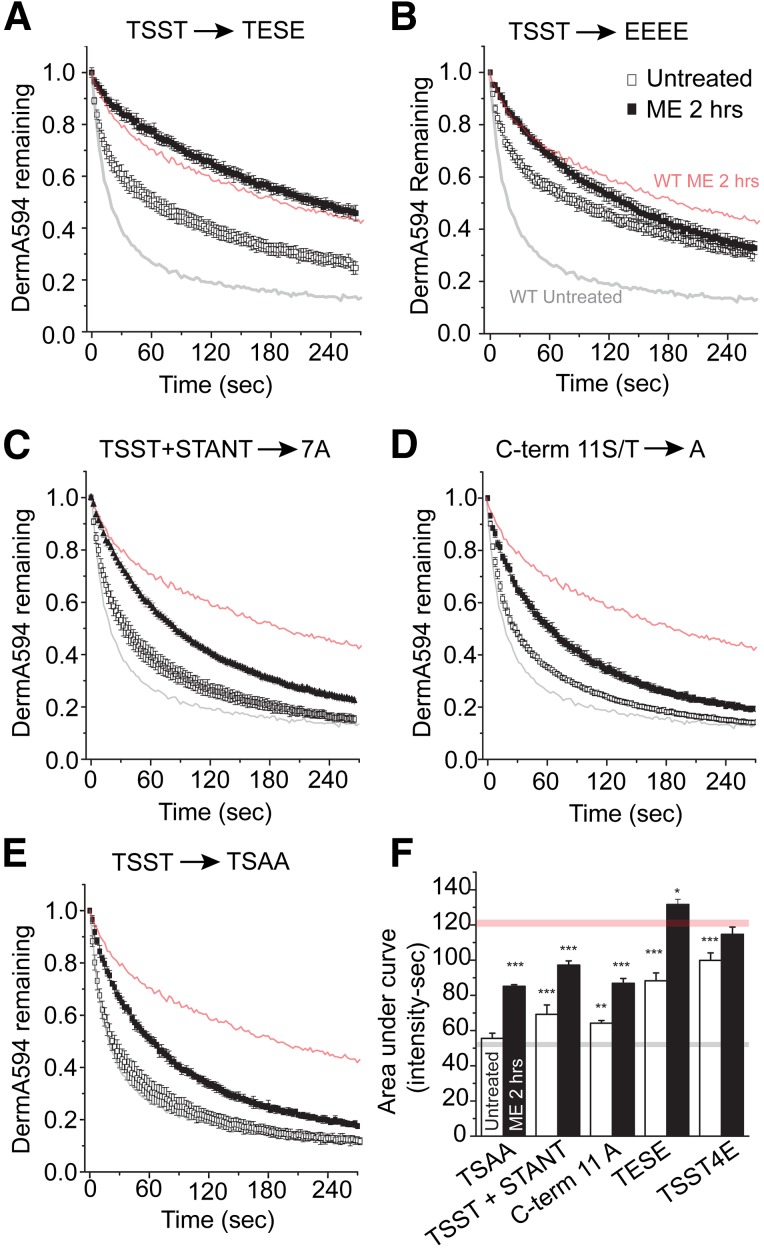Fig. 3.
Modulation in the C-terminal tail of MOPr is restricted to TSST. HEK293 cells expressing mutant FLAG-MOPr were untreated (open squares) or treated with ME (30 μM) for 2 hours (closed squares), and DermA594 (100 nM, 90 seconds) was added and then washed. Dissociation of DermA594 was measured and plotted. Previously shown data with WT FLAG-MOPr were superimposed with light gray (untreated) and light red (ME, 2 hours) lines. (A and B) TSST to TESE (TEST) and TSST to EEEE (TSST-4E) were used to mimic phosphorylation. (B–E) TSST to TSAA (TSAA) attenuated the ME-induced modulation of DermA594 binding to approximately the same extent as mutation of TSST/STANT-7A or mutation of all 11 serine and threonine residues in the C-terminal tail to alanines (C-term 11A) (n = 4–6, average ± S.E.M.). (F) Summarized data plotting AUC for the first 3 minutes of DermA594 dissociation for the mutants that were graphed above. WT MOPr AUC is drawn as a light gray line (untreated) and a light red line (ME, 2 hours) for comparison. Statistics compare mutant versus WT under the same treatment conditions (either untreated or ME treated) (n = 5–15, average ± S.E.M.).

